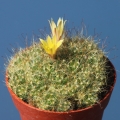




Your support is critical to our success.
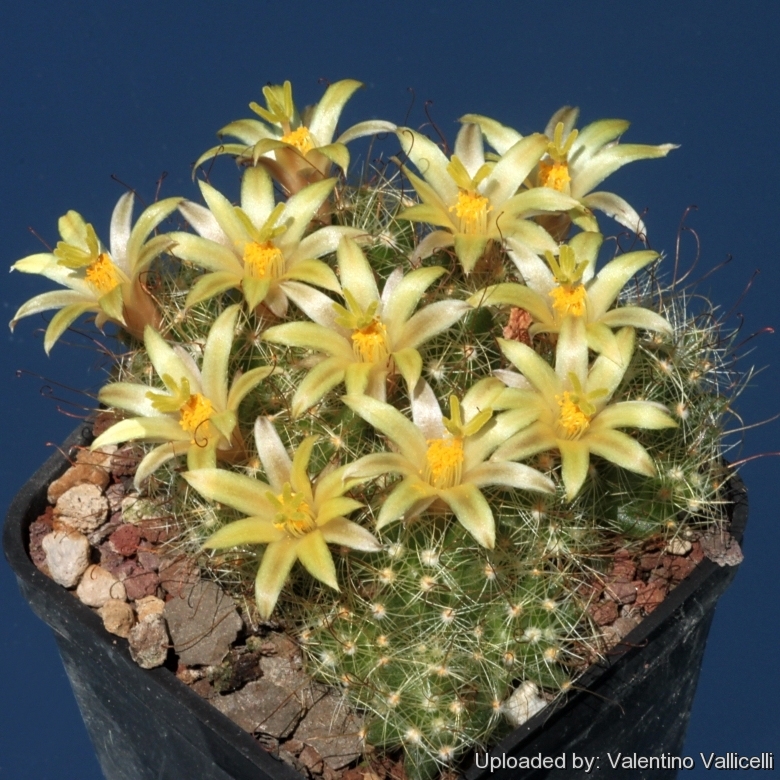
Origin and Habitat: Tamaulipas - nearby Miquihiuany to the north of San Luis Potosí - nearby La Inconada, North-Eastern Mexico (extent of occurrence is less than 5,000 km²).
Altitude: 950-1200 metres above sea level.
Habitat: Mammillaria surculosaSN|25329]]SN|25329]] occurs at low densities in severely disjunct subpopulations on lower slopes on calcareous soils in very sparse xerophytic shrubland along with Thelocactus tulensisSN|1065]]SN|1065]], Mammillaria microtheleSN|15836]]SN|15836]], Neolloydia conoideaSN|10089]]SN|10089]], Echinocereus pentalophusSN|1587]]SN|1587]], Opuntia microdasysSN|15506]]SN|15506]], Astrophytum myriostigmaSN|1845]]SN|1845]] v. strongylogonum. It is rare and hard to find. There is also evidence of illegal trade and declining habitat quality, hence it is reasonable to say there is continuing decline. Overgrazing of the habitat by goats may also pose a threat.
Ecology: The small heads of Mammillaria surculosaSN|25329]]SN|25329]] break off easily and attach to animal fur or feathers by means of the hooked central spine and then drop off later. These heads are spread to considerable distances by the animals, and can take root as they fall down to the ground, making them perfect for mass distribution via large areas.
Synonyms:
- Mammillaria surculosa Boed.
- Ebnerella surculosa (Boed.) Buxb.
Description: Mammillaria surculosaSN|25329]]SN|25329]] (Syn: Dolichnthele surculosa) is a low-growing widely spreading cactus forming crowded mats or mounds of small heads and relatively large, bright yellow flowers. The most obvious characteristic for associating it with Dolichothele are the prominent tubercles and the comparatively larger yellow flowers than those of the average.
Root: Taproot, merging with stem forming a stout tuberous rootstock.
Stems: Globose or elongate, spinous at the top, bright-green, to 1-3(-4) cm high and less than 2(-3) cm in diameter without milky sap.
Tubercles: Prominent, softish, about 8 long and 4 mm in diameter, tapering cylindrical, rounded apically, without latex, axils naked.
Central spine: One solitary, hooked, needle-like, slender, somewhat twisted, amber yellow or brownish-yellow, darker tipped, up to 20 mm long.
Radial spines: 12-15, white, 8-10 mm long, acicular, stiff , bristle-like, whitish to pale yellow, interlacing, flattened.
Flowers: Funnelform, sulphur yellow, sweetly scented, not more than 2,5 cm long and approx. 18 mm in diameter at anthesis. Tepals few, fused at the base, chrome-yellow with red tips and brownish-pink stripes on the backside.
Blooming season: Spring.
Fruits: Oblong green to greenish brown partly reddish.
Seeds: Light brown.
Bibliography: Major references and further lectures
1) Robert T. Craig “The Mammillaria handbook: with descriptions, illustrations, and key to the species of the genus Mammillaria of the Cactaceae” E P Publishing, 1945
2) John Pilbeam “Mammillaria The Cactus File Handbook” Cirio Pub. Services, 01/Dec/1999
3) Edward Anderson “The Cactus family” Timber Press, Incorporated, 2001
4) James Cullen, Sabina G. Knees, H. Suzanne Cubey "The European Garden Flora Flowering Plants: A Manual for the Identification of Plants Cultivated in Europe, Both Out-of-Doors and Under Glass" Cambridge University Press, 11/Aug/2011
5) David R Hunt; Nigel P Taylor; Graham Charles; International Cactaceae Systematics Group. "The New Cactus Lexicon" dh books, 2006
6) Clive Innes, Charles Glass “Cacti” Portland House, 01/May/1991
7) N. L. Britton, J. N. Rose “The Cactaceae. Descriptions and Illustrations of Plants of the Cactus Family.” Volume 4, The Carnegie Institution of Washington, Washington 1923
8) Curt Backeberg “Die Cactaceae: Handbuch der Kakteenkunde” Gustav Fischer Verlag, Stuttgart New York 1982–1985
9) John Borg “Cacti: a gardener's handbook for their identification and cultivation” Blandford P., 1970
10) Erik Haustein “Der Kosmos-Kakteenführer: Bestimmung, Pflege, Vermehrung. Über 490 Kakteenarten” Franckh-Kosmos, 1998
11) R. Ginns “A guide to cactus and succulent plants” (c/o B. C. F. Hill, 10 Downfield Close, Llandough, Penarth, Glam.)], National Cactus and Succulent Society, 1971
12) Roger Spencer “Horticultural Flora of South-eastern Australia. Volume 2, Flowering Plants: Dicotyledons. Part 1, the Identification of Garden and Cultivated Plants” UNSW Press, 1995
13) Fitz Maurice, B, Sotomayor, M., Fitz Maurice, W.A. & Hernández, H.M. 2013. Mammillaria surculosa. In: IUCN 2013. "IUCN Red List of Threatened Species." Version 2013.2. <www.iucnredlist.org>. Downloaded on 01 January 2014.
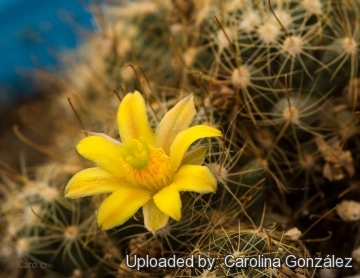
Mammillaria surculosa Photo by: Carolina González
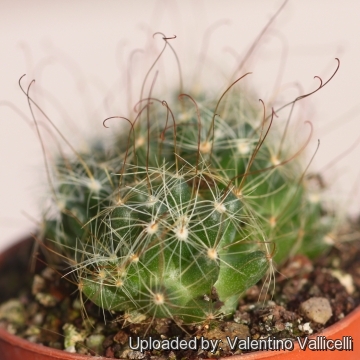
Mammillaria surculosa Photo by: Valentino Vallicelli
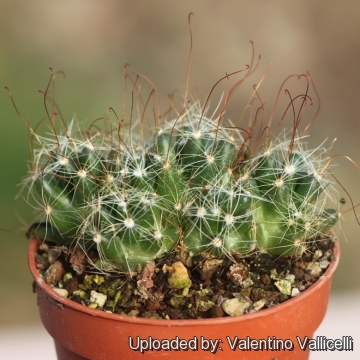
Mammillaria surculosa Photo by: Valentino Vallicelli
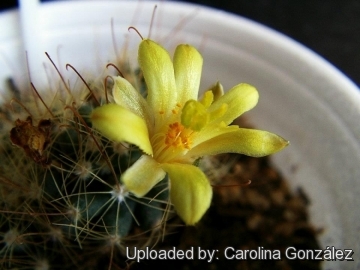
Mammillaria surculosa Photo by: Carolina González

Mammillaria surculosa Photo by: Valentino Vallicelli
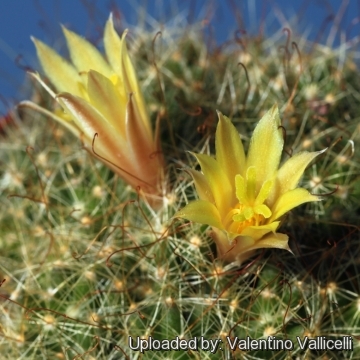
Mammillaria surculosa Photo by: Valentino Vallicelli
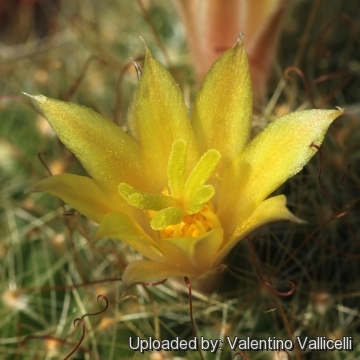
Mammillaria surculosa Photo by: Valentino Vallicelli
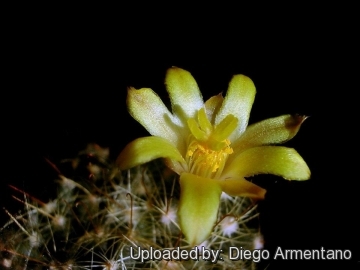
Mammillaria surculosa Photo by: Diego Armentano
Cultivation and Propagation: Mammillaria surculosaSN|9068]]SN|25329]] is a freely clustering species that reproduces easily by cutting, recommended for any collection that needs lots of light with ample airflow.
Growth rate: It is a small growing, but easily flowering species. It offset from the base and can fill a 25 cm pot in just a few years given the best conditions.
Soils: It likes very porous standard cactus mix soil with little organic matter (peat, humus). This species benefits from a more open potting mix than its near relatives such as Mammillaria decipiensSN|25329]]SN|9068]].
Repotting: Repotting every 2-3 years. It will need a pot with sufficient depth to allow the tap root. As it is especially prone to rot under-pot in a smaller container filled with very porous compost. Use pot with good drainage.
Watering: Water regularly in summer, but do not overwater (very wet-sensitively, especially in light of its succulent root system). Its roots are easily lost in pots that stay damp for any length of time. Keep dry with ample airflow in winter. In the rest period no high atmospheric humidity!! Care must be taken with watering as they tends to become swollen and untidy in growth habit if given too much water and shade.
Fertilization: During the growing season enrich the soil using a fertilizer rich in potassium and phosphorous, but poor in nitrogen, because this chemical element doesn’t help the development of succulent plants, making them too soft and full of water.
Hardiness: Reputedly sensitive to frost , but less so if kept on the dry side prior to, and during, cold weather (hardy to -5° C for short periods). However some warmth throughout the year will increase the grower's success (minimum 5° to 8°C during rest season).
Exposition: Outside bright sun, filtered sunlight or afternoon shade, inside it needs bright light, and some direct sun. Subject to sunburn if exposed to direct sun for too long. Tends to bronze in strong light, which encourages flowering and heavy wool and spine production.
Uses: It is an excellent plant for container growing. It always looks good and stays small. It look fine in a cold greenhouse and frame.
Pests & diseases: It may be attractive to a variety of insects, but plants in good condition should be nearly pest-free, particularly if they are grown in a mineral potting-mix, with good exposure and ventilation. Nonetheless, there are several pests to watch for:
- Red spiders: Sensitive to red spider mite. Overhead watering is helpful in controlling mites.
- Mealy bugs: Occasionally mealy bugs they develop aerial into the new growth among the wool with disfiguring results, but the worst types develop underground on the roots and are invisible except by their effects.
- Scales: Scales are rarely a problem.
- Rot: Rot it is only a minor problem with cacti if the plants are watered and “aired” correctly. If they are not, fungicides won't help all that much.
Propagation: Direct sow after last frost or (usually) cuttings. Seeds germinate in 7-14 days at 21-27° C in spring, remove the glass cover gradually as the plants develops and keep ventilated, no full sun for young plants! The seedlings should not be disturbed until they are well rooted, after which they can be planted separately in small pots. Cuttings: wait until the offsets that appear at the base of old clustered specimens are 1/3 the size of the parent and then detach and plant. Cuttings will take root in a minimum temperature of 20° C (but better in hot weather). Cuttings of healthy shoots can be taken in the spring and summer. Cut the stem with a sharp, sterile knife, leave the cutting in a warm, dry place for a week or weeks (depending on how thick the cutting is) until a callus forms over the wound. Once the callus forms, the cutting may be inserted in a container filled with firmed cactus potting mix topped with a surface layer of coarse grit. They should be placed in the coarse grit only; this prevents the cut end from becoming too wet and allows the roots to penetrate the rich compost underneath. The cuttings should root in 2 to 6 weeks.
| Your Actions | |
|---|---|
| Back to Mammillaria index | |
| Back to Cactaceae index | |
 |
Back to Cacti Encyclopedia index |
Privacy stantement - Terms and conditions - How to cite - About us - Feedback - Donate




